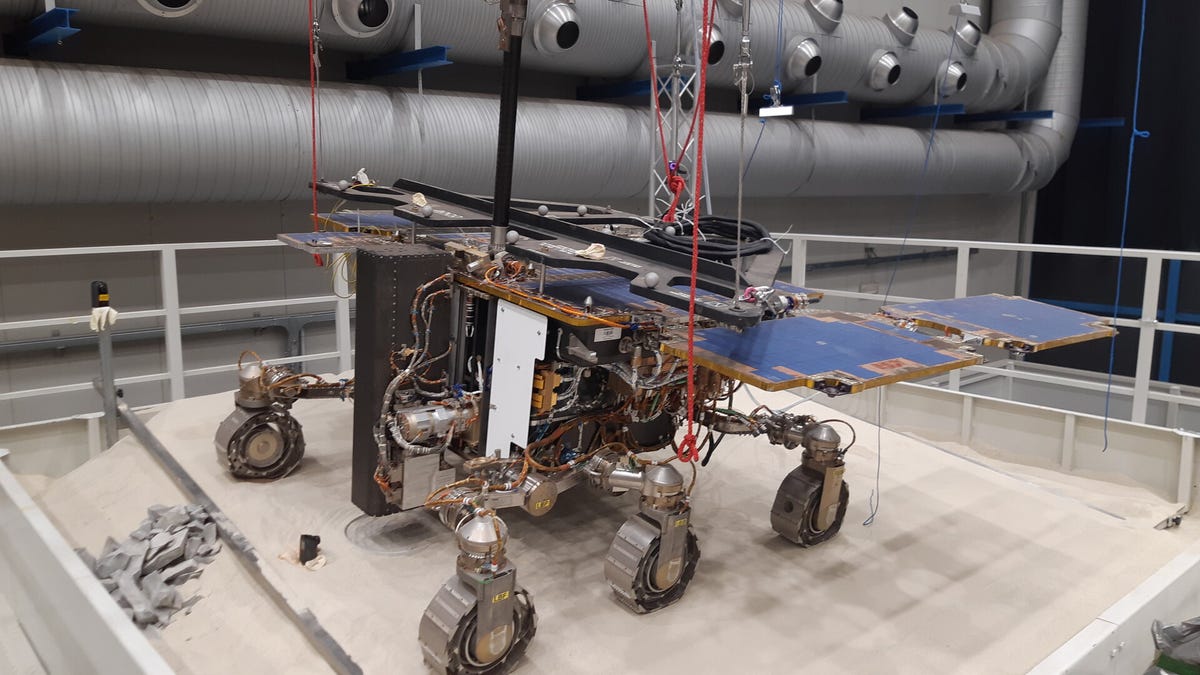Next Mars rover will drill deeper underground than ever before to hunt for life
Drilling in the dee-ee-eep. The ExoMars rover's Earth-dwelling twin shows off its skills.
What lies beneath? The European Space Agency's Rosalind Franklin Mars rover could answer this question in depth. ESA has successfully tested out a remarkable drilling system that it hopes to deploy on the red planet. The system will go way, way deeper than any previous rover drill.
The Rosalind Franklin rover will be traveling to the red planet for the ExoMars 2022 mission. It has a doppelganger that'll remain here on Earth and that's used to try out the main rover's technologies, including the drill system.
"The long-awaited success of the ExoMars drill ... would be a first in Mars exploration," the ESA's director of human and robotic exploration, David Parker, said in a statement Wednesday.
The deepest drilling on Mars has reached only about 2.8 inches (7 centimeters). ESA's rover is designed to dig in up to 6.5 feet (2 meters), grab a small soil sample and then bring it back up to an onboard laboratory for analysis.
ESA's rover twin, known as the Ground Test Model, had the chance to give its drill a workout in a test bed filled with rocks and soil layers. ESA released a video showing the drill at work. So far, the Ground Test Model has shown it can reach 5.6 feet (1.7 meters) into the ground.
The idea is to reach samples that haven't been bombarded with radiation on the surface. "The reliable acquisition of deep samples is key for ExoMars' main science objective: to investigate the chemical composition -- and possible signs of life -- of soil that has not been subjected to damaging ionizing radiation," said ExoMars project scientist Jorge Vago.
ESA's Rosalind Franklin rover Ground Test Model is like a stunt double that remains on Earth. Here's a close look at where its drill meets the ground.
Drilling on Mars gives us insights into Martian geology and history. NASA's Perseverance rover recently experienced a triumph when it drilled out its first rock core samples on Mars.
ExoMars is a joint project of ESA and Russia's Roscosmos space agency. Rosalind Franklin's launch was delayed from 2020 to 2022 in order to work through hardware and software issues and deal with impacts from the COVID-19 pandemic.
The test rover's drilling exercises are one important step toward preparing the mission to go to Mars. It gives the rover team the opportunity to work out any kinks and to make sure the system functions as intended.
Mars can be fussy -- as NASA's InSight lander discovered when it unsuccessfully tried to burrow into the ground -- but the ExoMars team will do everything it can to make sure Rosalind's drill is up to the challenge of digging in deeper than ever before.


